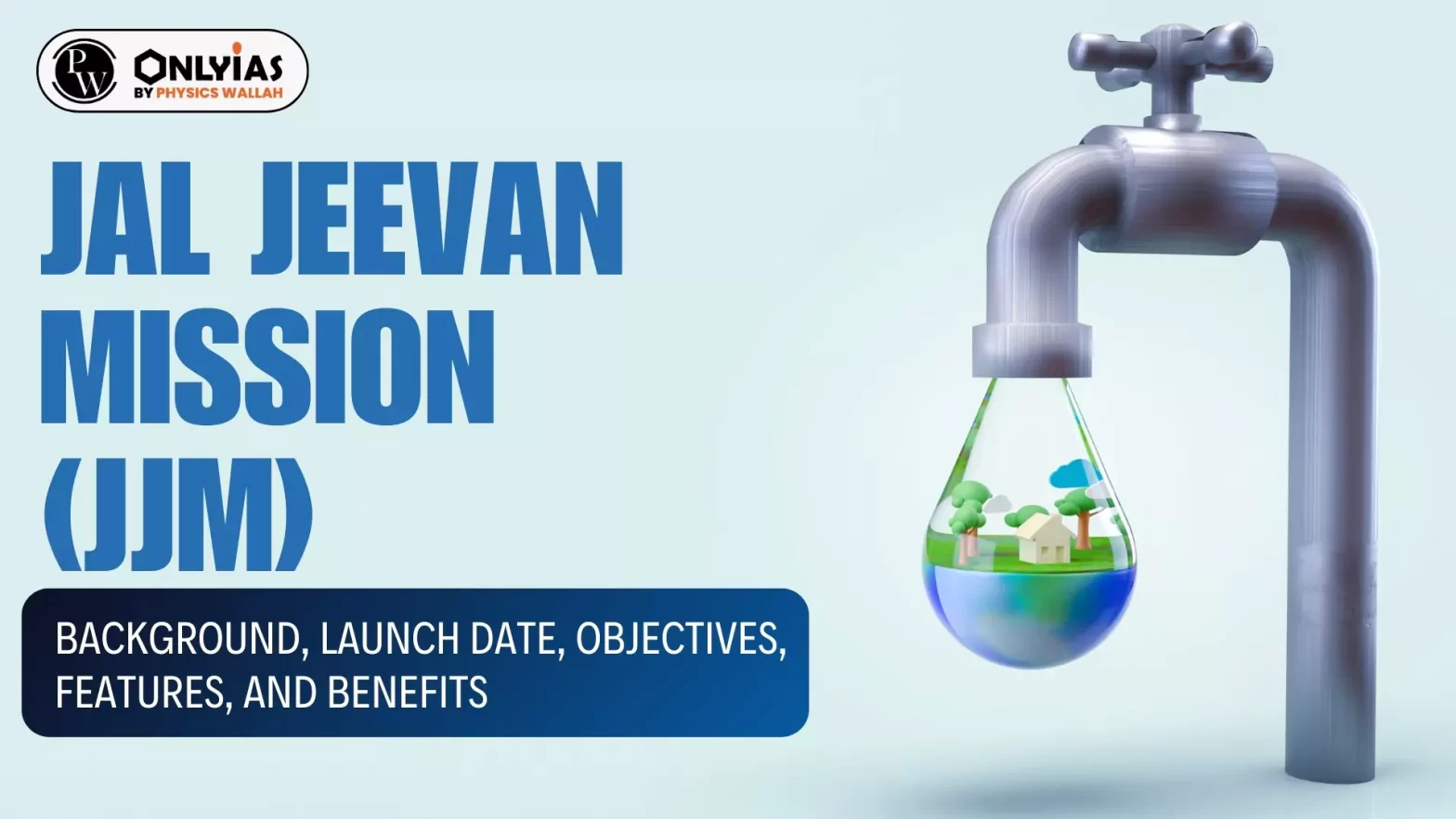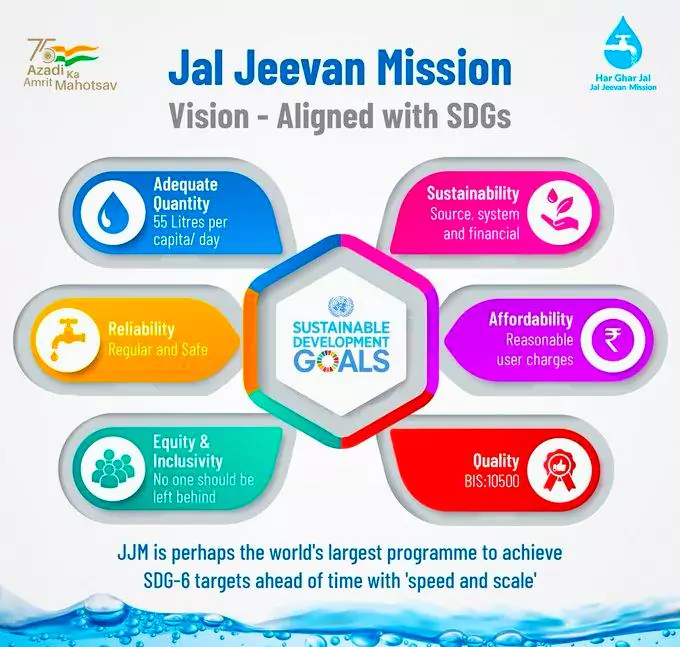![]() PWOnlyIAS
PWOnlyIAS
![]() March 19, 2024 06:55
March 19, 2024 06:55
![]() 613
613
![]() 0
0
Jal Jeevan Mission (JJM) is a flagship initiative of the Government of India aimed at providing safe and adequate drinking water to all rural households by 2024.

Jal Jeevan Mission (JJM) is a flagship initiative of the Government of India aimed at providing safe and adequate drinking water to all rural households by 2024. This programme will also implement source sustainability measures as mandatory elements, such as recharge and reuse through greywater management, water conservation, rain water harvesting.
| Greywater is wastewater from non-toilet plumbing systems such as hand basins, washing machines, showers and baths. If it is properly handled properly, greywater can be safely reused for the garden. |
|---|
| Tier | Mission | Role |
| National Level | National Jal Jeevan Mission (NJJM) | Headed by a senior officer with a directorate, NJJM will provide policy guidance, financial assistance and technical support to states. |
| State Level | State Water and Sanitation Mission (SWSM) | SWSM would be responsible for coordination, convergence and policy guidance at the state level. |
| District Level | District Water and Sanitation Mission (DWSM) | Headed by Deputy Commissioner/District Collector, DWSM will ensure preparation of village action plan; finalize a district action plan; provide administrative approval of in-village water supply schemes. |
| Village Level | Paani Samiti/Village Water & Sanitation Committee (VWSC)/ User group | The committee will be headed by Sarpanch/ Up-Sarpanch/ Gram Panchayat member/ traditional village head/ senior village leader. |
Strength |
|
Weakness |
|
Opportunities |
|
Threat |
|

| Must Read | |
| NCERT Notes For UPSC | UPSC Daily Current Affairs |
| UPSC Blogs | UPSC Daily Editorials |
| Daily Current Affairs Quiz | Daily Main Answer Writing |
| UPSC Mains Previous Year Papers | UPSC Test Series 2024 |
<div class="new-fform">
</div>

Latest Comments